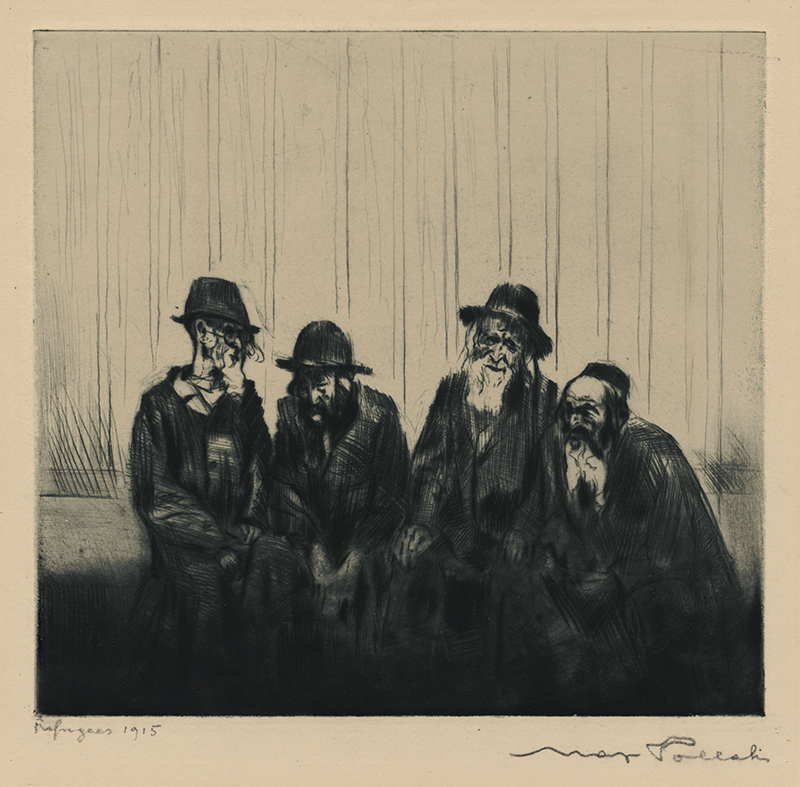
19th, 20th & 21st Century Fine Prints
707-546-7352 · fax 707-546-7924 · web: www.annexgalleries.com · email: artannex@aol.com
Refugees by Max Pollak

Refugees
Max Pollak
Refugees
Max Pollak
1886 - 1970 (biography)During World War I, Pollak was an official painter for the Austrian army. He was ordered to paint propaganda war pictures. "But I didn't," he explained. "I painted the horrors of war--the ruined cities, the wounded women and children." This infuriated his superior officers, and he was sent to the front as punishment.
From the spring of 1915, the Austro-Hungarian Empire found itself fighting on three distinct fronts: Russia, Serbia, and Italy. The majority of the border regions were therefore absorbed into the so-called “war zone.” Moreover, between 1914 and 1915, vast portions of Habsburg territory had been invaded. The population was on the move.
A refugee barracks that housed around 4000 Galician Jews was established in Nikolsburg (Mikulov), Moravia in poor conditions that included an epidemic of measles. As an "official" government artist Pollak had free access to the camp and, in 1914/15, recorded it in a series of small drypoints, which were published in 1915 in a portfolio titled Im Barackenlager Nikolsburg (In the Barrack Camp at Nikolsburg). Other images from the same time not included in the portfolio further illustrate the impact it had on Pollak, who was Jewish himself. In this image he depicts four elderly men, seated together, talking and waiting.
